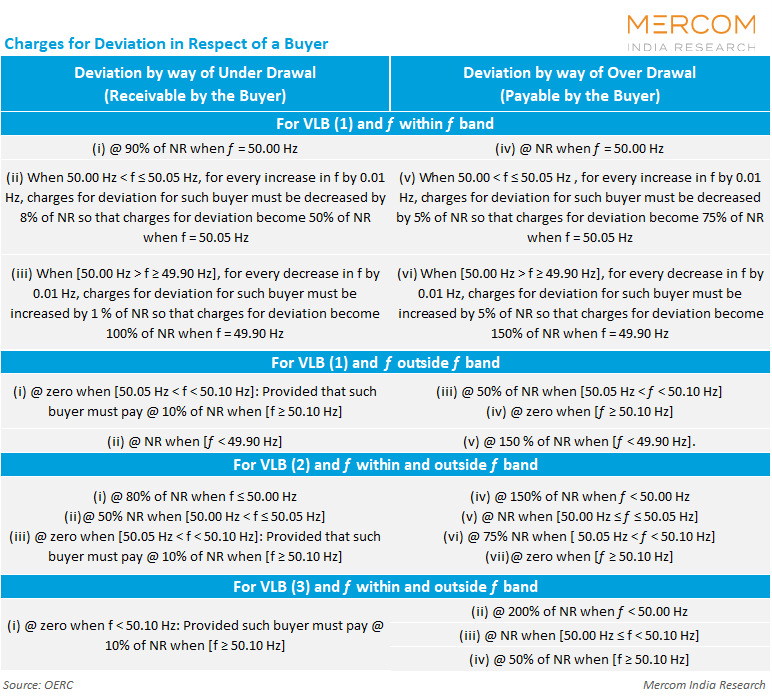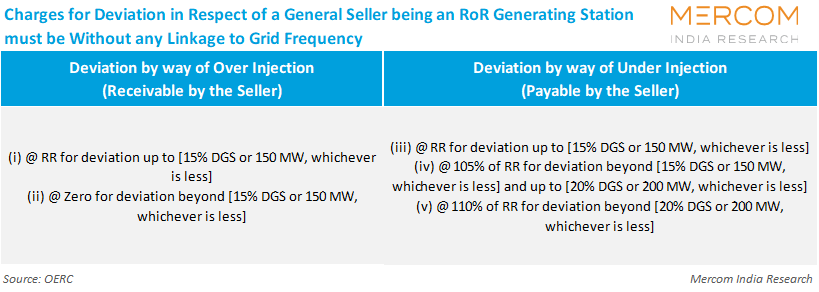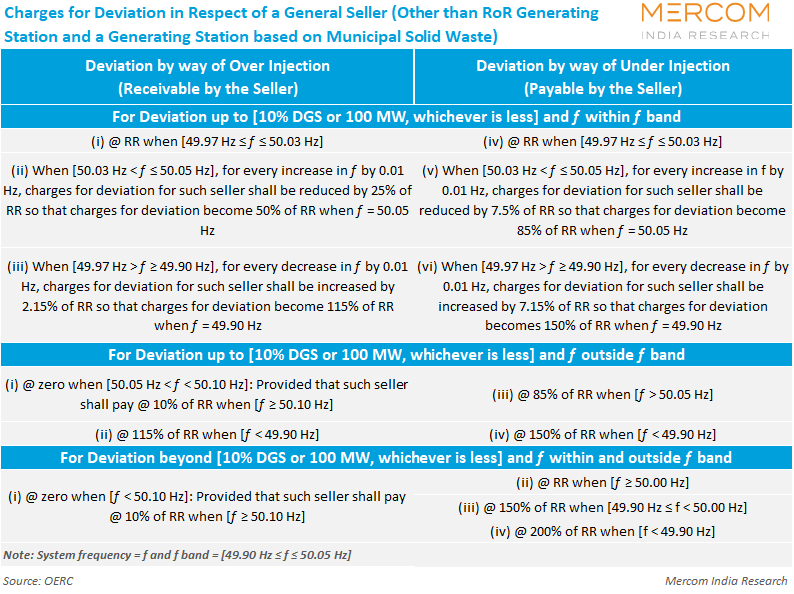Odisha Electricity Regulator Issues Draft Deviation Settlement Guidelines
Stakeholders can submit their comments and suggestions by August 30, 2025
August 4, 2025
Follow Mercom India on WhatsApp for exclusive updates on clean energy news and insights
The Odisha Electricity Regulatory Commission (OERC) has issued the draft Intrastate Deviation Settlement Mechanism and Related Matters Regulations, 2025, to establish a commercial mechanism to ensure grid users’ adherence to scheduled electricity drawal and injection, and maintain grid security and stability.
Stakeholders can submit their comments and suggestions by August 30, 2025.
These regulations will apply to electricity sellers and buyers who use the intrastate transmission or distribution system through open access. The deviation settlement mechanism under these regulations applies to all sellers with an installed generating capacity of 100 kW or more who schedule their power through the state load dispatch center (SLDC).
It also applies to all buyers, including distribution licensees, deemed distribution licensees within the state, and consumers connected to the intra-state transmission system whose electricity drawal is scheduled through the SLDC.
Deviation Computation
- Deviation in a time block for general sellers will be computed as follows:
Deviation – general seller (DGS) (in MWh) = [(Actual injection in MWh) – (Scheduled generation in MWh)].
Deviation – general seller (DGS) (in %) = 100 x [(Actual injection in MWh) – (Scheduled generation in MWh)] / [(Scheduled generation in MWh)]
- Deviation in a time block for a wind/solar seller will be computed as follows:
Deviation – Wind/Solar (WS) seller (DWS) = [(Actual injection in MWh) – (Scheduled generation in MWh)].
Deviation – WS seller (DWS) (in %) = 100 x [(Actual injection in MWh) – (Scheduled generation in MWh)] / [(Scheduled generation in MWh)].
- Deviation in a time block for buyers will be computed as follows:
Deviation – buyer (DBUY) (in MWh) = [(Actual drawal in MWh) – (Scheduled drawal in MWh)].
Deviation – buyer (DBUY) (in %) = 100 x [(Actual drawal in MWh) – (Total Scheduled drawal in MWh)] / [(Total Scheduled drawal in MWh)].
Normal Rate of Charges for Deviation
The normal rate (NR) of charges for deviation for a particular time block will be the highest of (A), (B), or (C), where (A), (B), and (C) are as follows:
(A) The weighted average ACP (in paise /kWh) of the integrated day-ahead market (DAM) segments of all the power exchanges.
(B) The weighted average ACP (in paise /kWh) of the real-time market segments of all the power exchanges.
(C) The sum of:
(a) 1/3 [weighted average ACP (in paise/kWh) of the integrated DAM segments of all the power exchanges]
(b) 1/3 [weighted average ACP (in paise/kWh) of the real-time market segments of all the power exchanges]
(c) 1/3 [ancillary service charge (in paise/kWh) computed based on the total quantum of Ancillary Services (SRAS UP and TRAS UP) deployed and the net charges payable to the ancillary service providers for all the regions]: provided that in case of non-availability of ACP for any time block on a given day, ACP for the corresponding time block of the last available day will be considered.
Deviation Charges
There will be no charges for deviation when injecting infirm power. However, if infirm power is scheduled after a trial run as specified in the Grid Code, any deviation from the scheduled infirm power will incur charges applicable to a general or WS seller.
For drawing start-up power before the commercial operation date of a generating unit or for drawing power to run auxiliaries during the shutdown of a generating station, the deviation charges will be based on the reference charge rate, the contract rate, or if neither is available, the weighted average ACP of the DAM segments across all power exchanges for the respective time block.
For forced or partial outages of a seller, deviation charges will be based on the reference charge rate for up to eight time blocks or until the schedule is revised, whichever is sooner.
For a seller whose bids are cleared in the high price day-ahead market (HP-DAM), the reference charge rate for deviation due to under-injection for the power sold through HP-DAM will be the weighted average ACP of the HP-DAM Market segments across all power exchanges for that time block.
Charges for Deviation and Ancillary Service Pool Account
Every Thursday, the Odisha Power Transmission Corporation must send the previous week’s deviation data, ending Sunday midnight, to the SLDC. Based on this data, the SLDC will prepare and issue a statement of deviation charges. These will be sent to all regional entities by the following Friday or Saturday.
The SLDC will be responsible for maintaining separate accounting records for the principal and interest components of deviation charges. Additionally, a state deviation pool account will be maintained and operated by the SLDC unless the Commission designates another entity for this task. This account will receive all payments related to deviation charges, late payment surcharges, and other charges as notified by the Commission. It will be used to make payments to sellers who are over-injecting, to buyers under-drawing, and for other payments as may be directed.
For interstate deviations, the Grid Corporation of Odisha will be responsible for charges based on the Eastern Regional Power Committee’s weekly reports. The SLDC must maintain separate accounts for interstate and intrastate deviation settlements.
Any surplus in the state deviation pool account at the end of the financial year will be used for improving power system operations. This includes projects and studies aimed at enhancing grid reliability, safety, and security, as well as capacity building and training programs. Such spending must be part of an annual plan submitted to the Commission, and any additional schemes must receive prior approval.
If the account faces a shortfall during any weekly settlement, the deficit will be recovered through additional charges imposed on state entities. These charges will be proportional to the net deviation charges each state entity owes for that specific week and will be billed through supplementary invoices.
The SLDC will prepare a detailed energy accounting procedure within 30 days of notification of these Regulations and must be submitted to the Commission for approval.
It will carry out a mock exercise of the deviation accounting and settlement after the Commission’s approval of the aforesaid procedure for at least three months and not exceeding six months. There will be no financial transactions during the mock exercise.
The payment of deviation charges will have a high priority. The concerned state entity must pay the due amounts within 10 days of the issue of the statement of charges for deviation by the SLDC, failing which a late payment surcharge of 0.04% must be payable for each day of delay.
CERC issued its Deviation Settlement Mechanism and Related Matters Regulations in August last year.
Subscribe to Mercom’s real-time Regulatory Updates to ensure you don’t miss any critical updates from the renewable industry.




